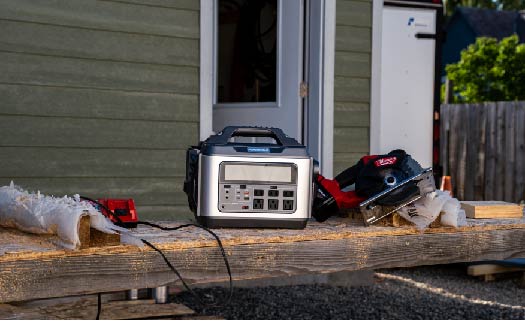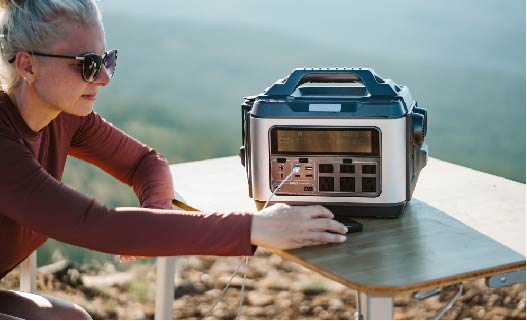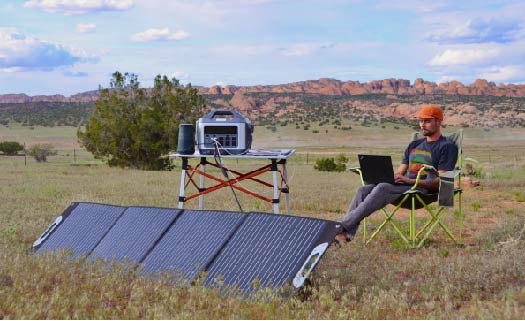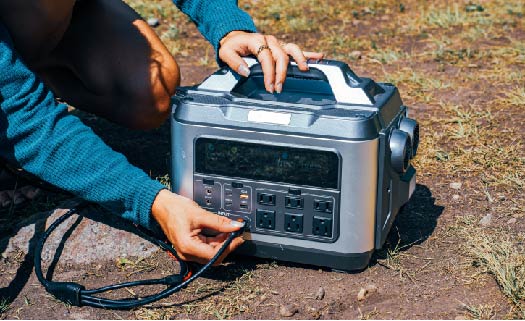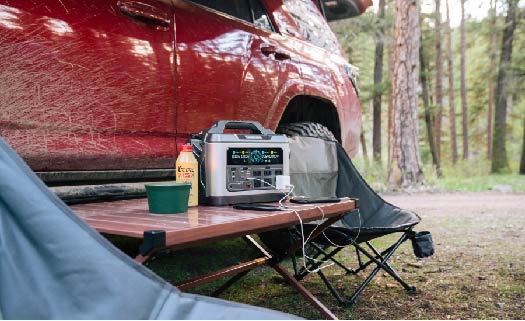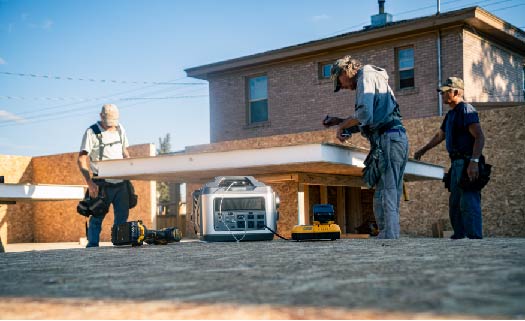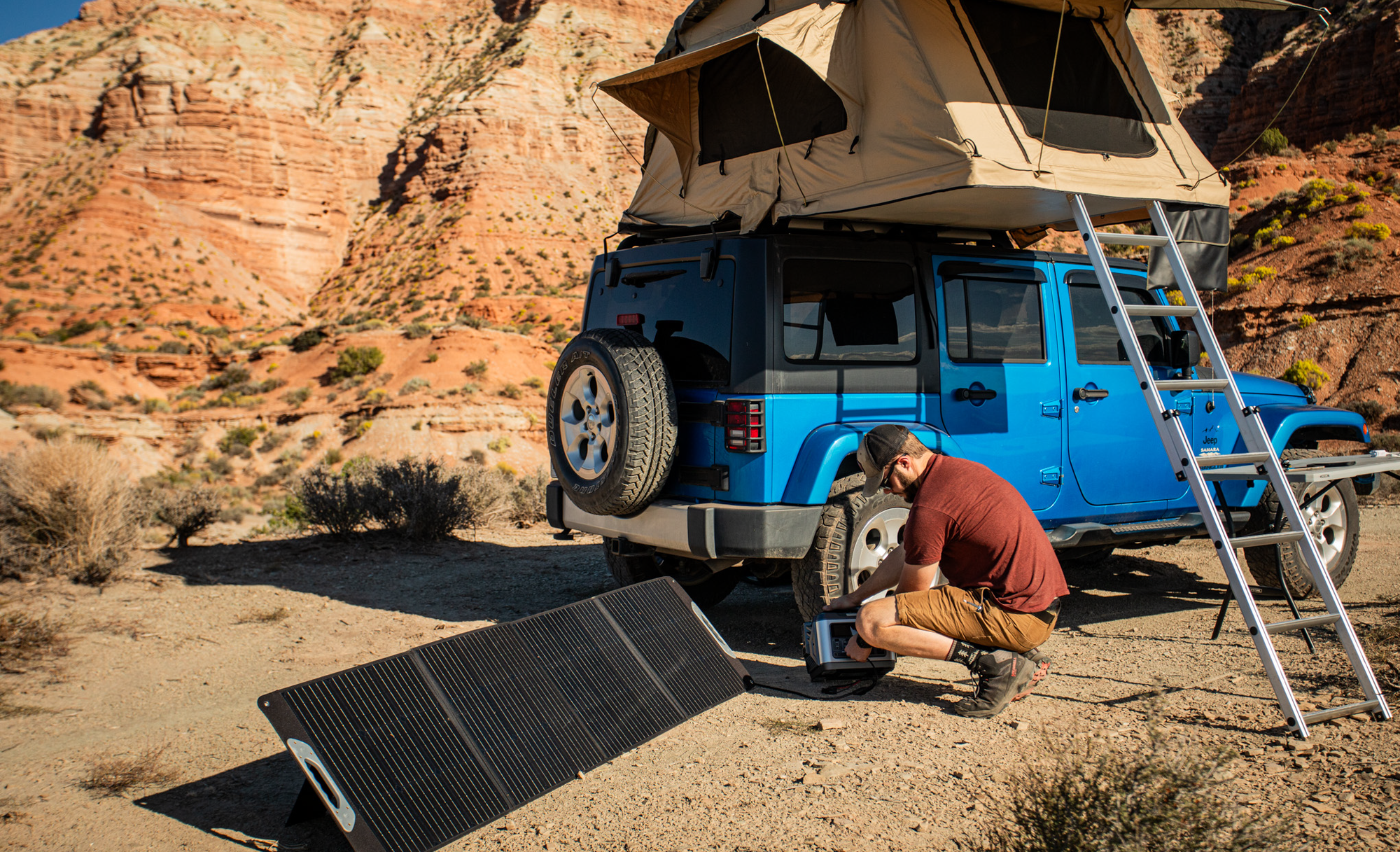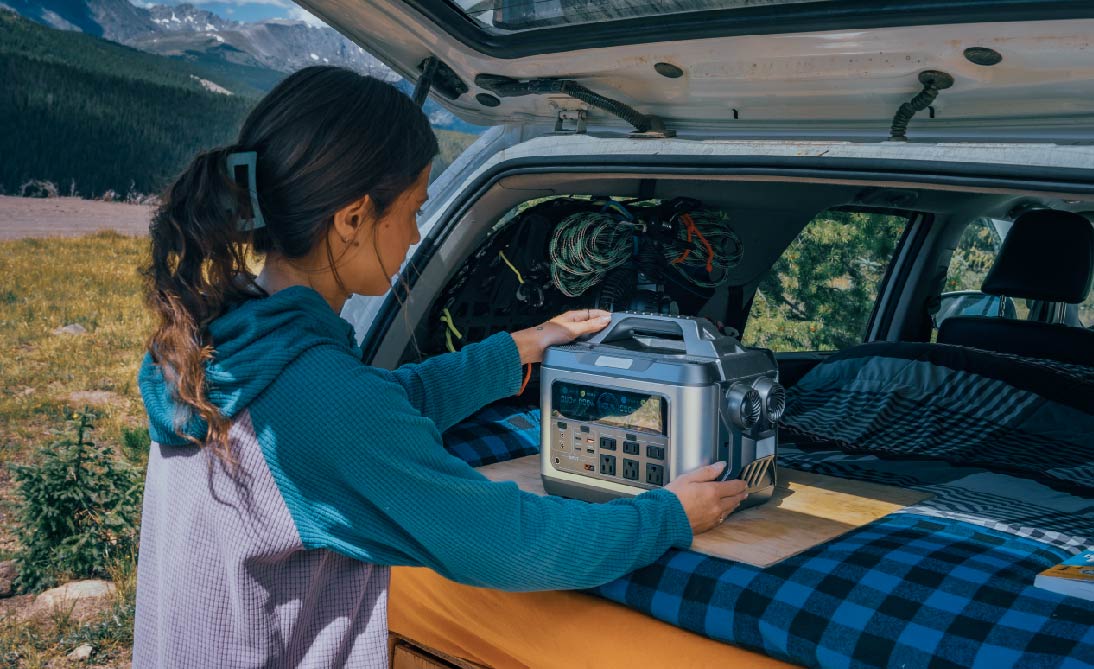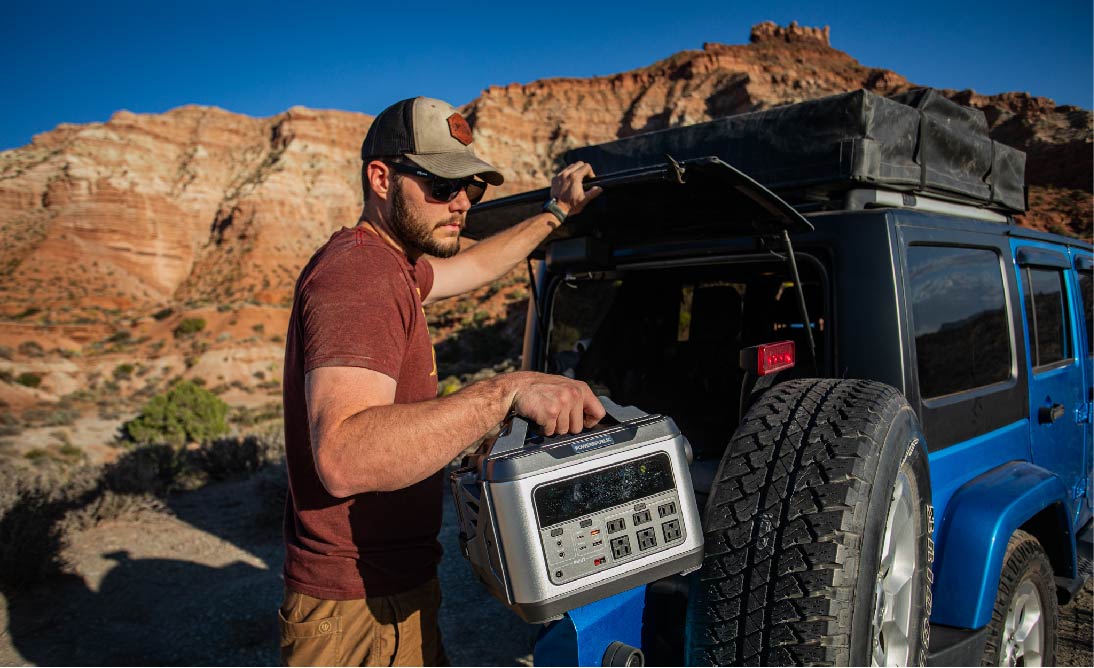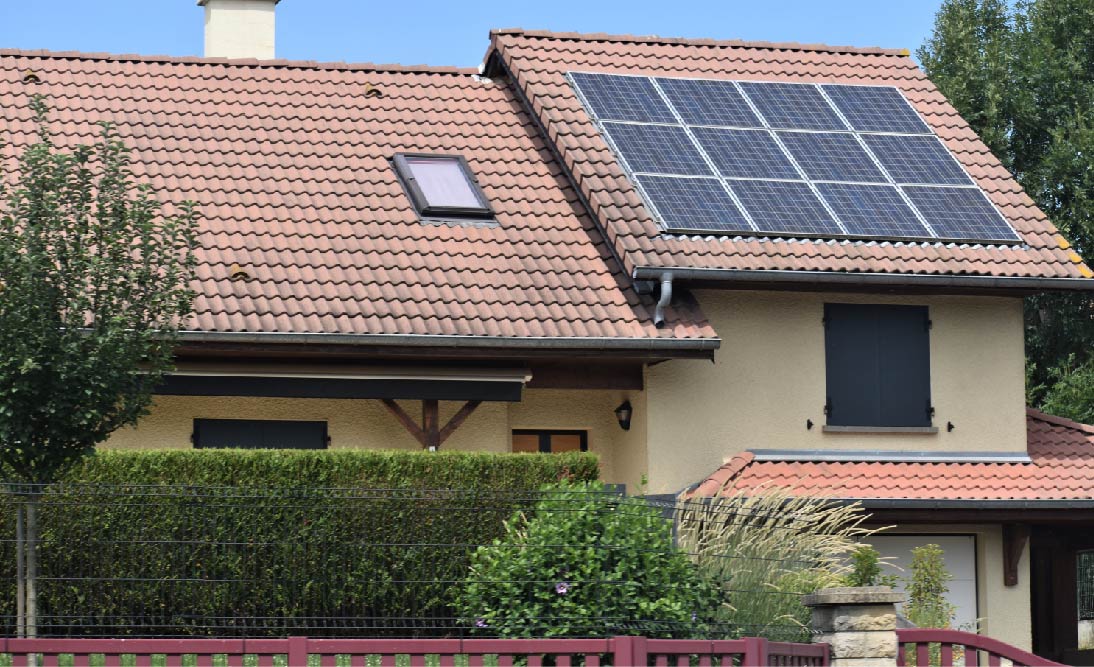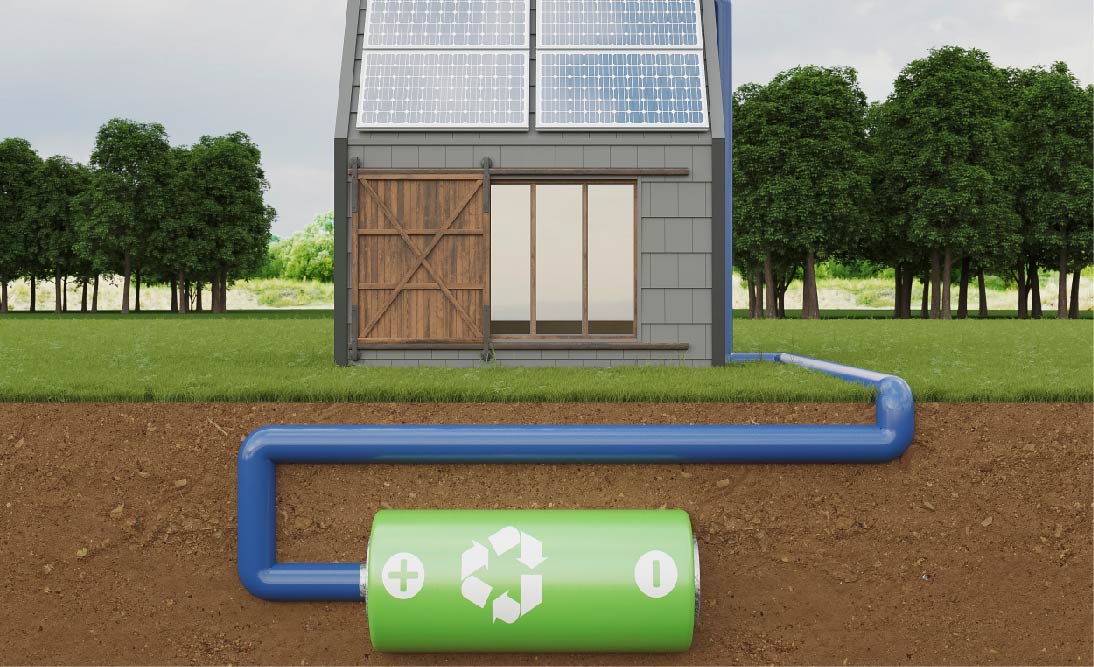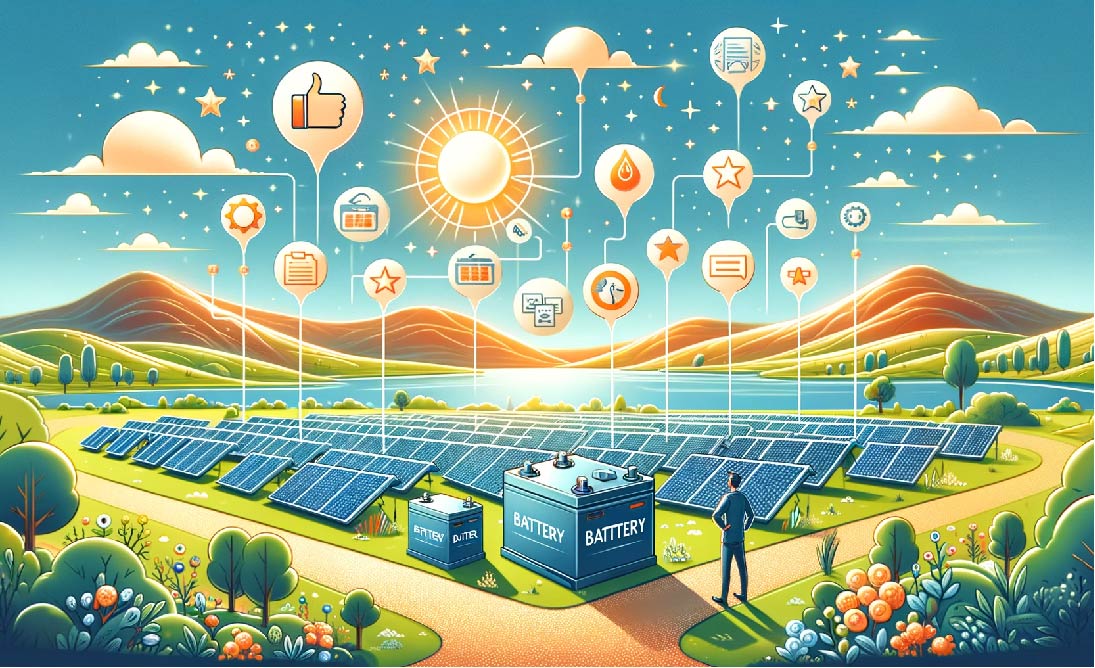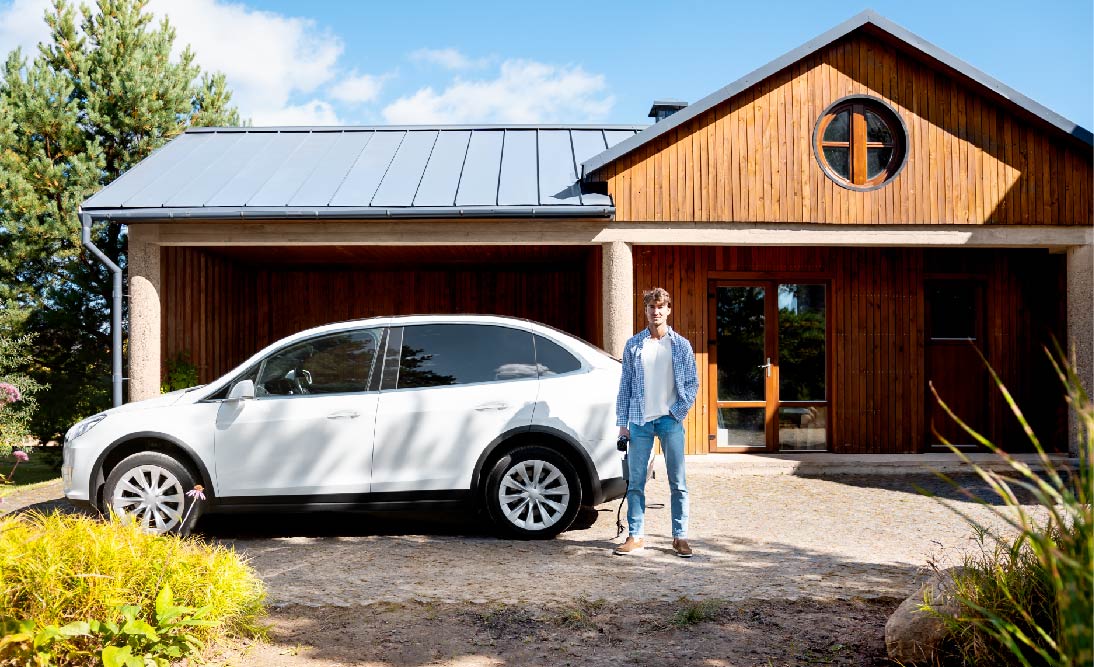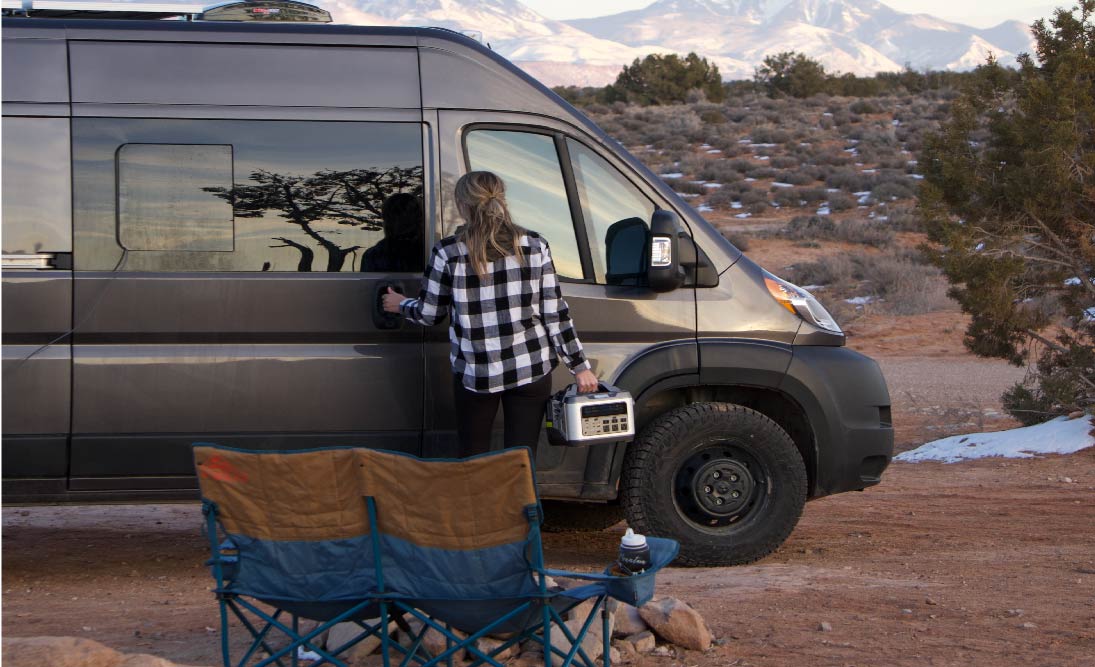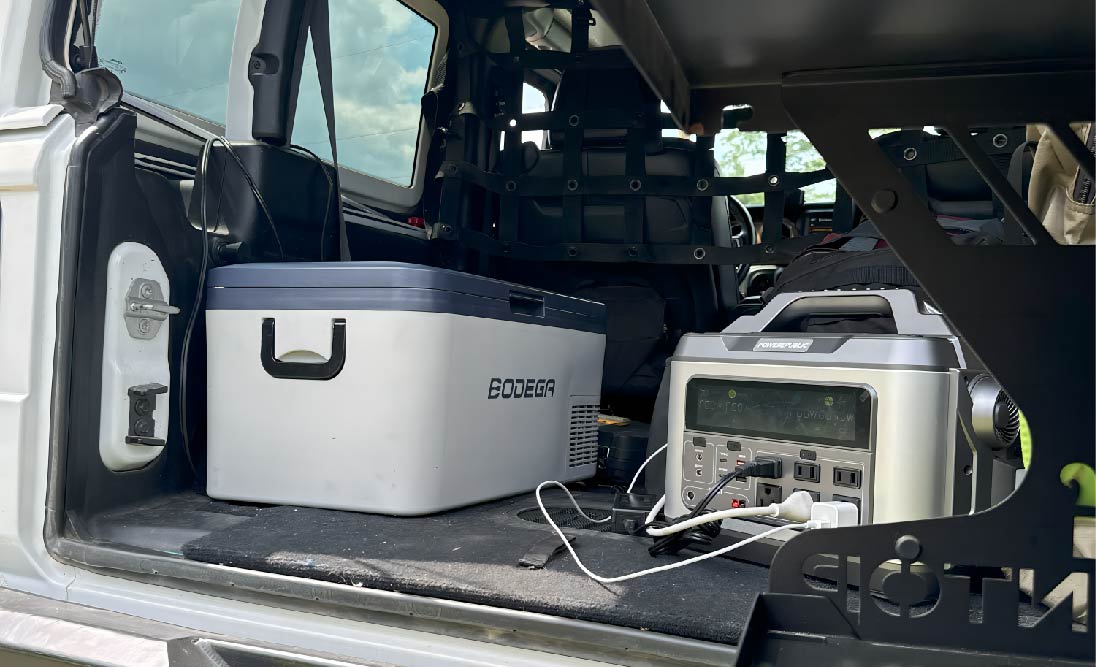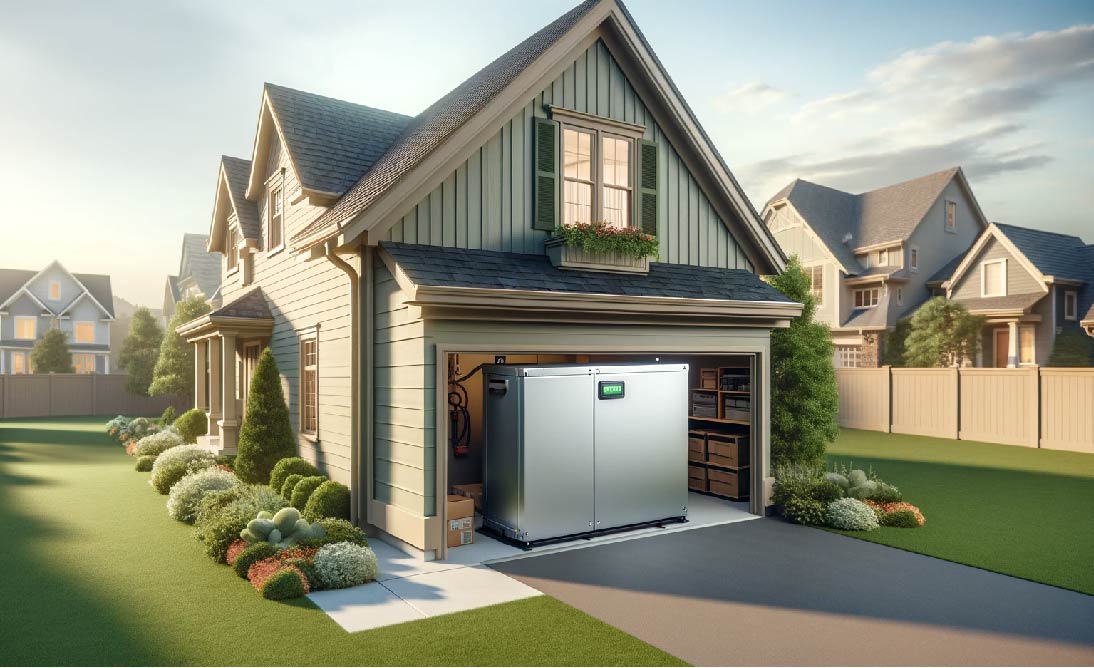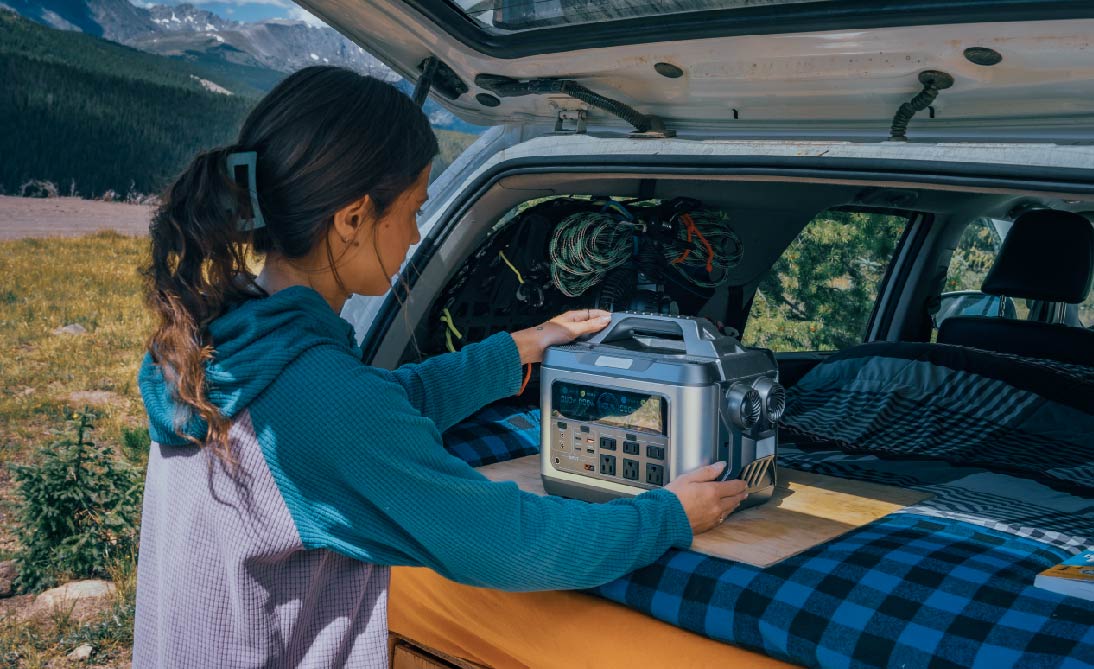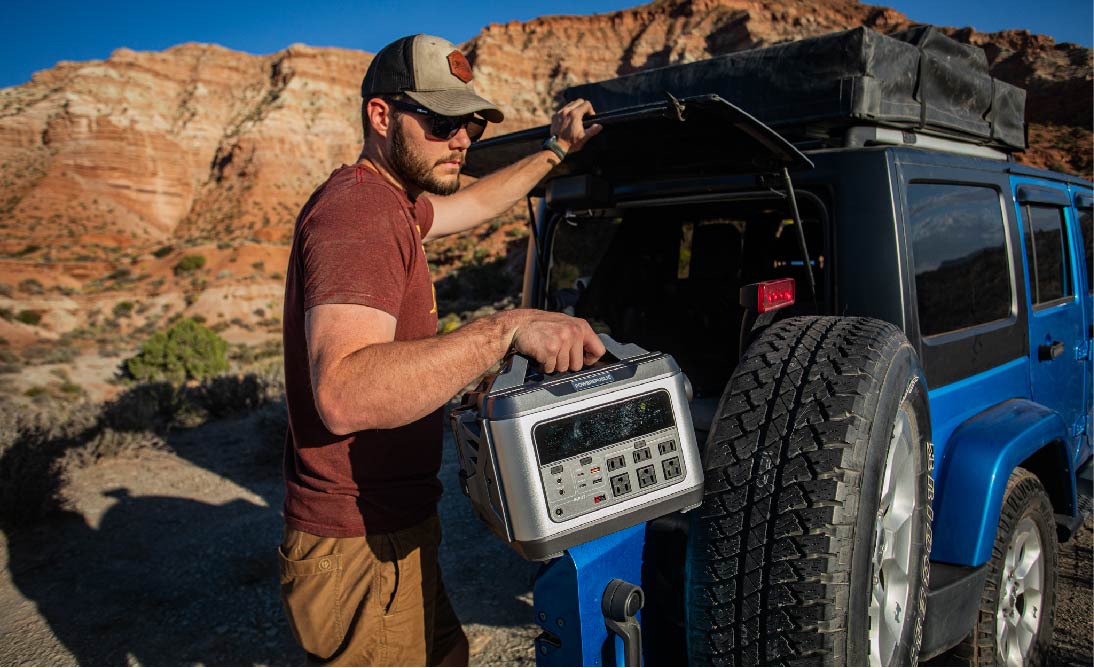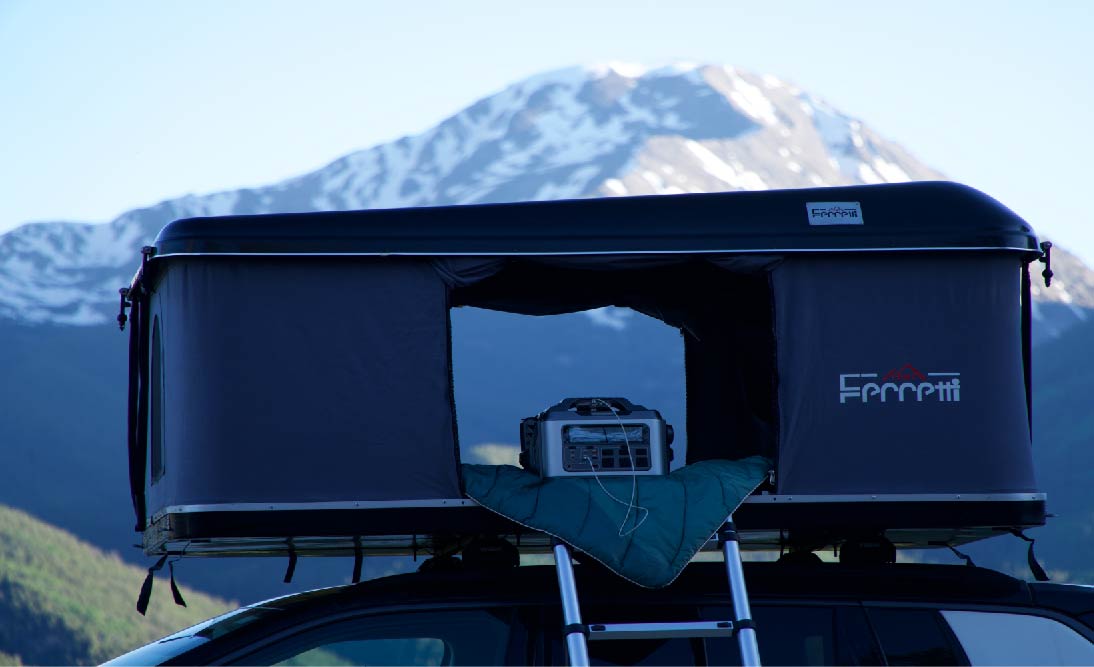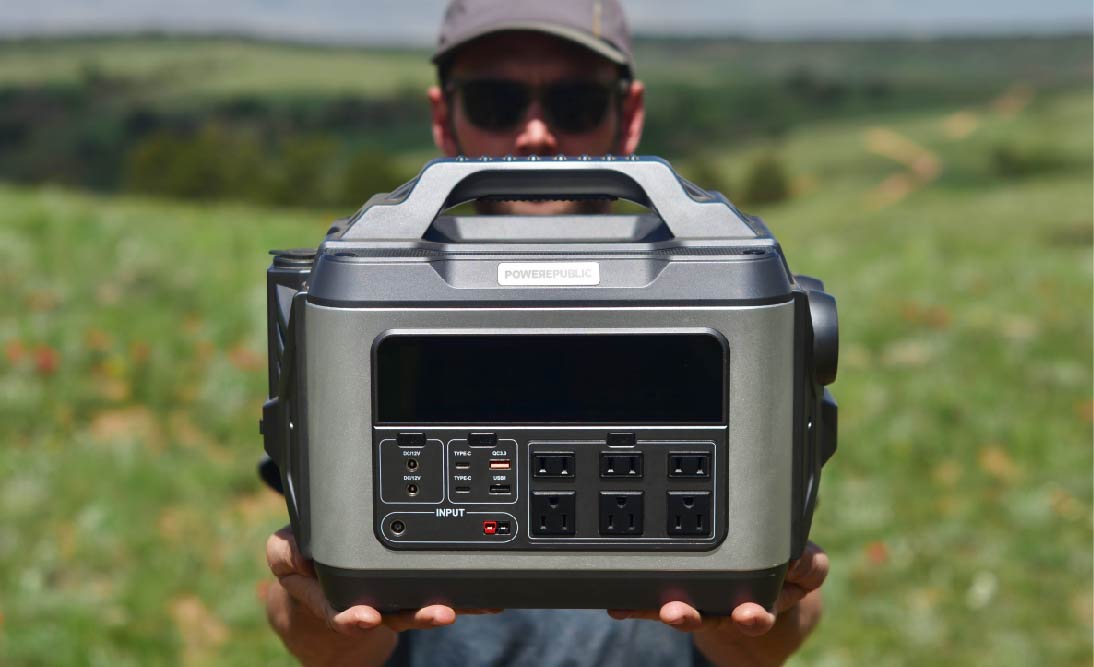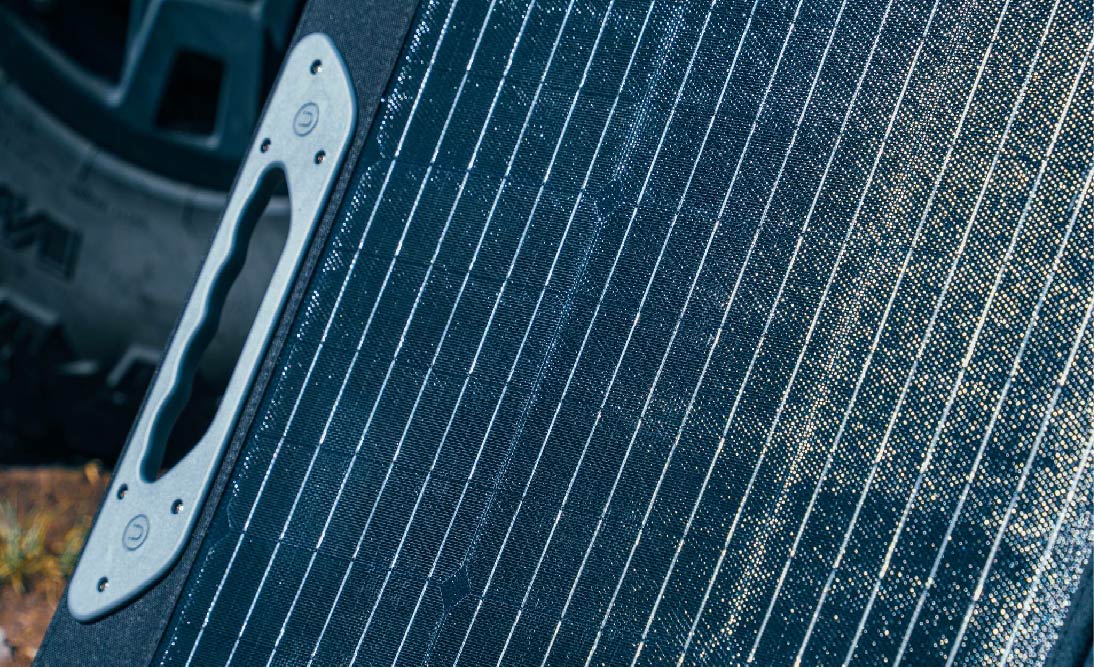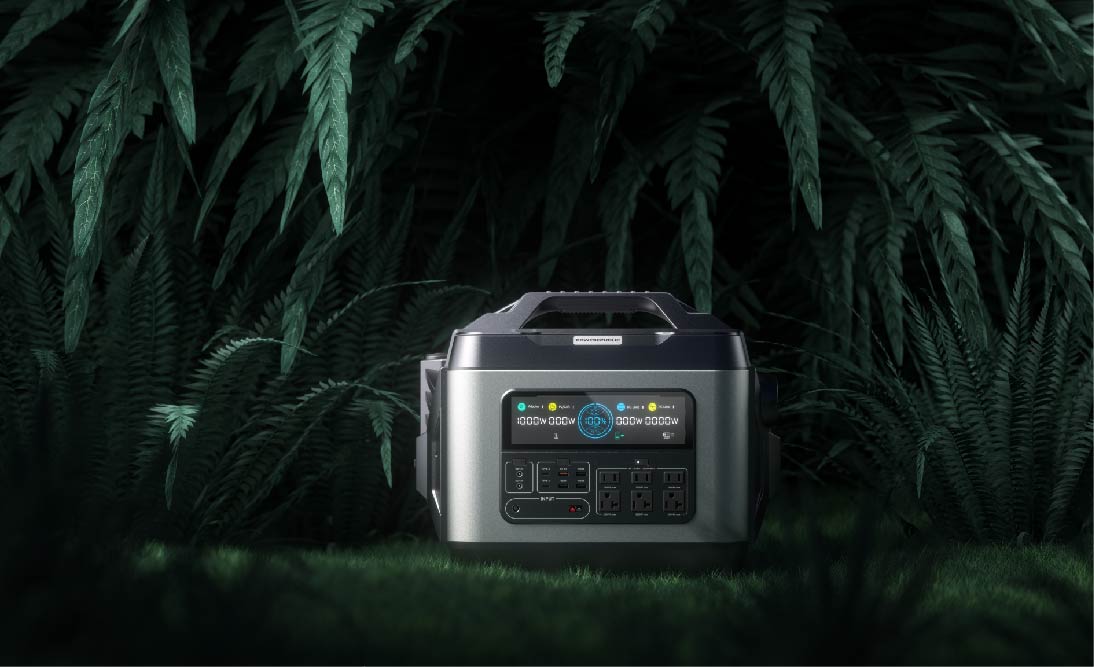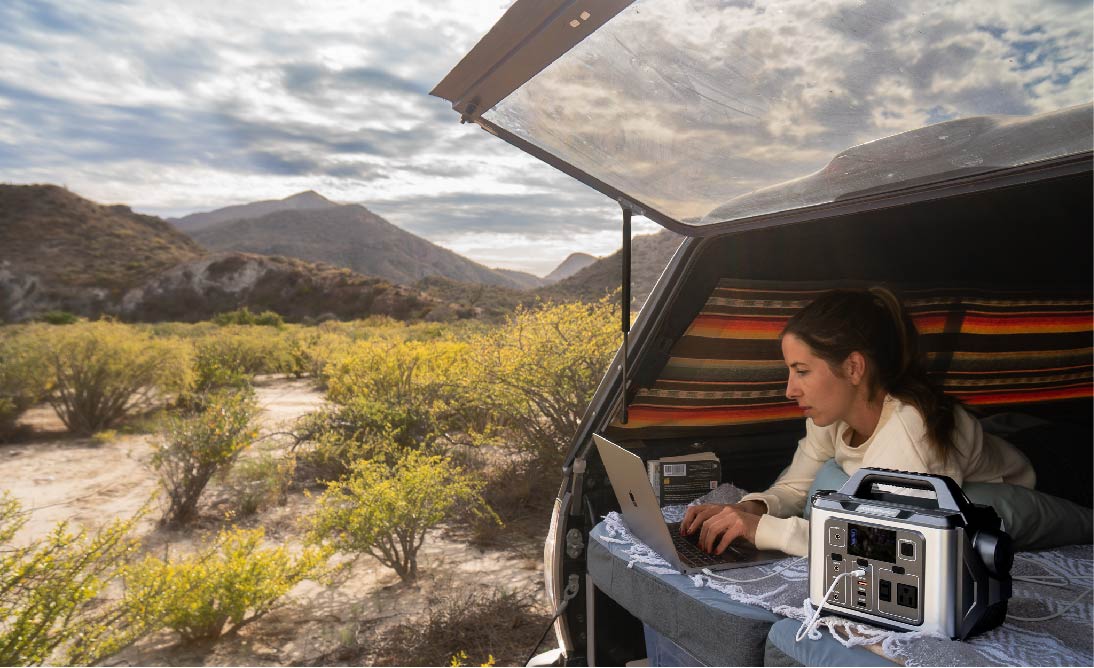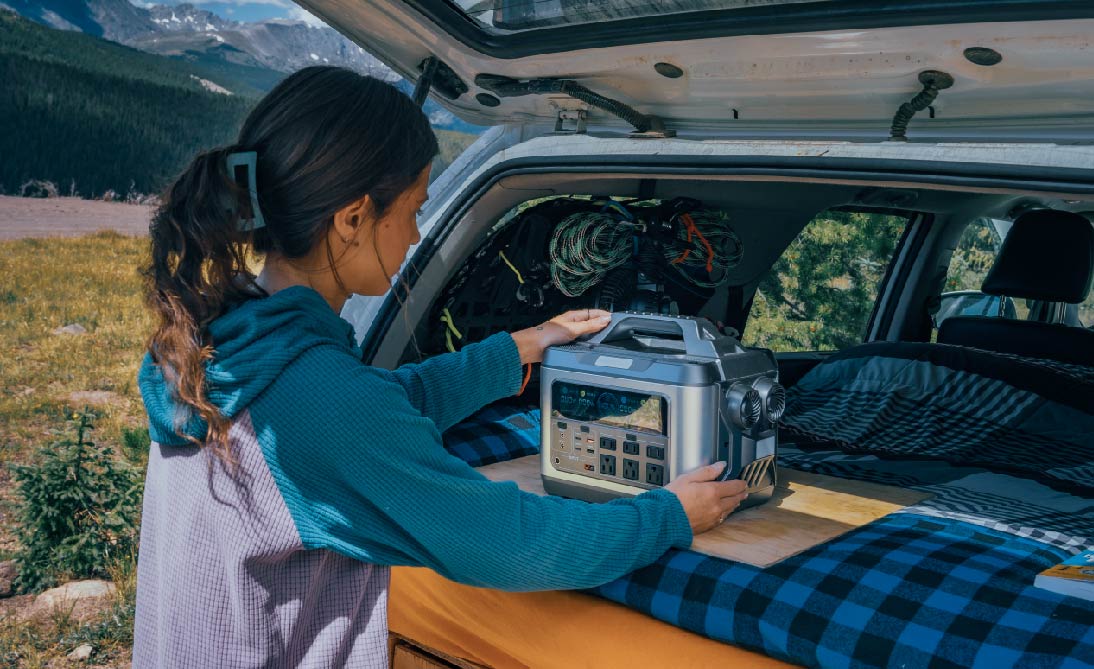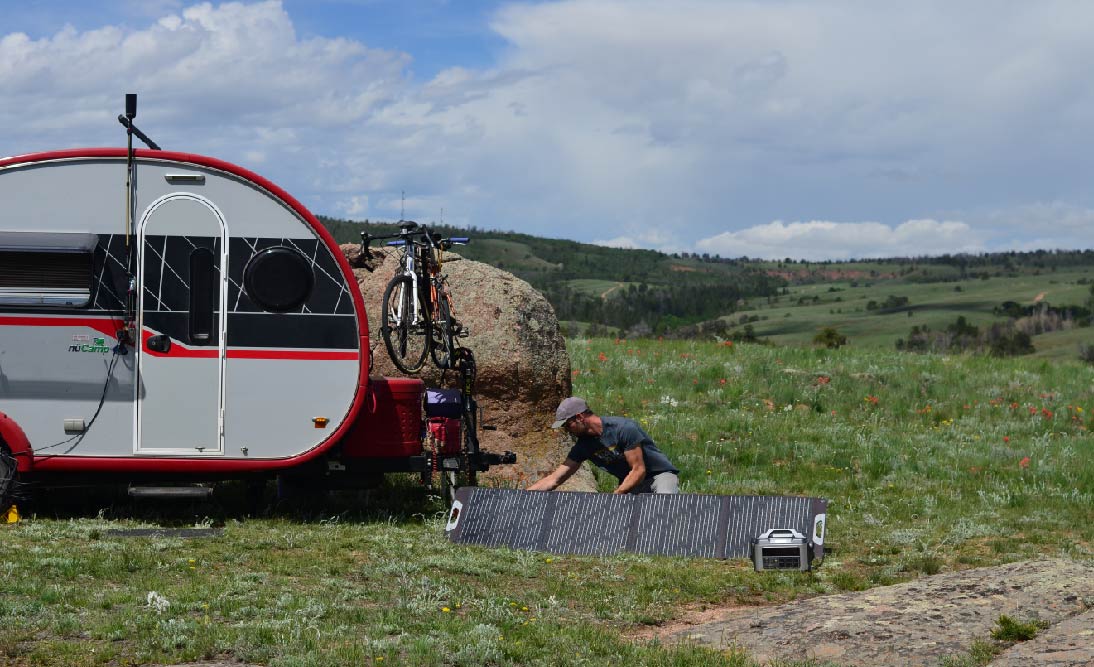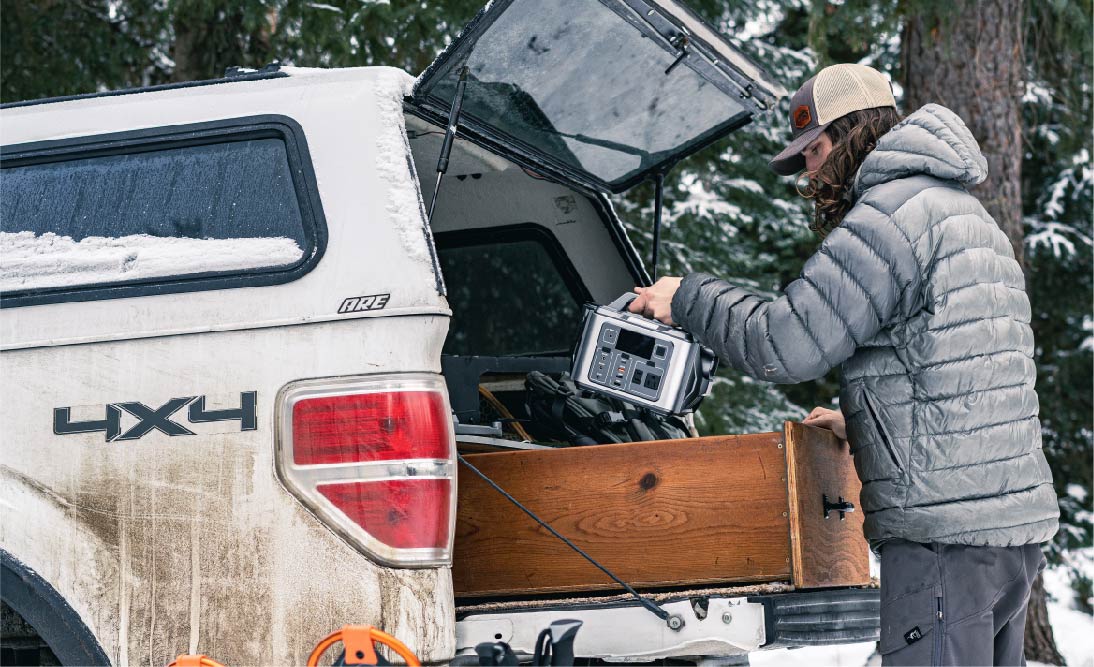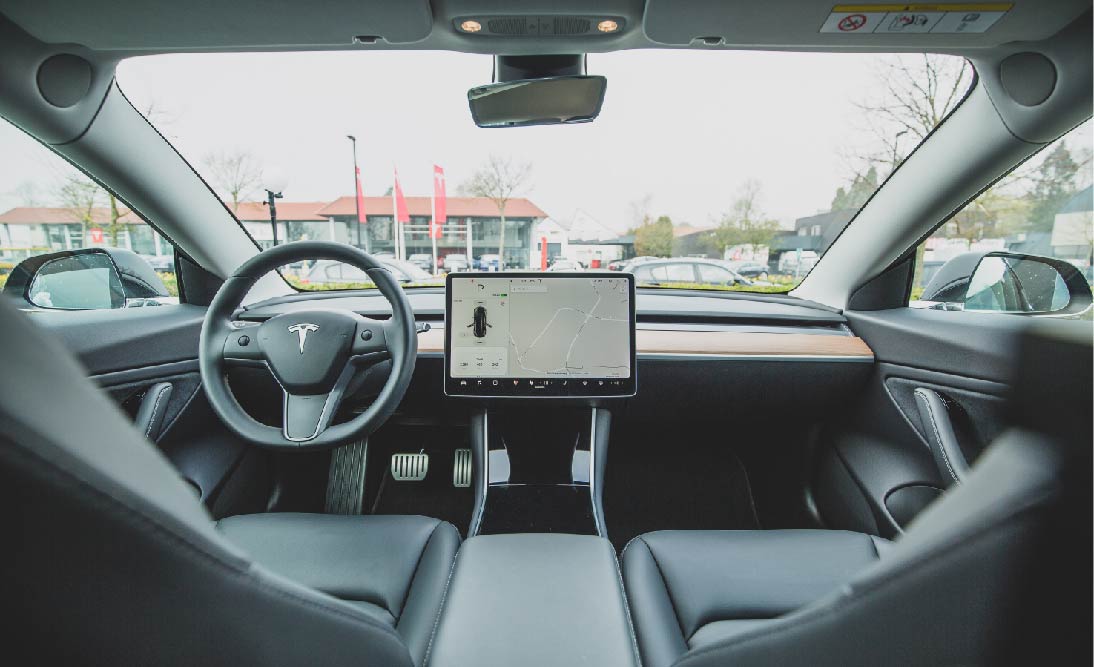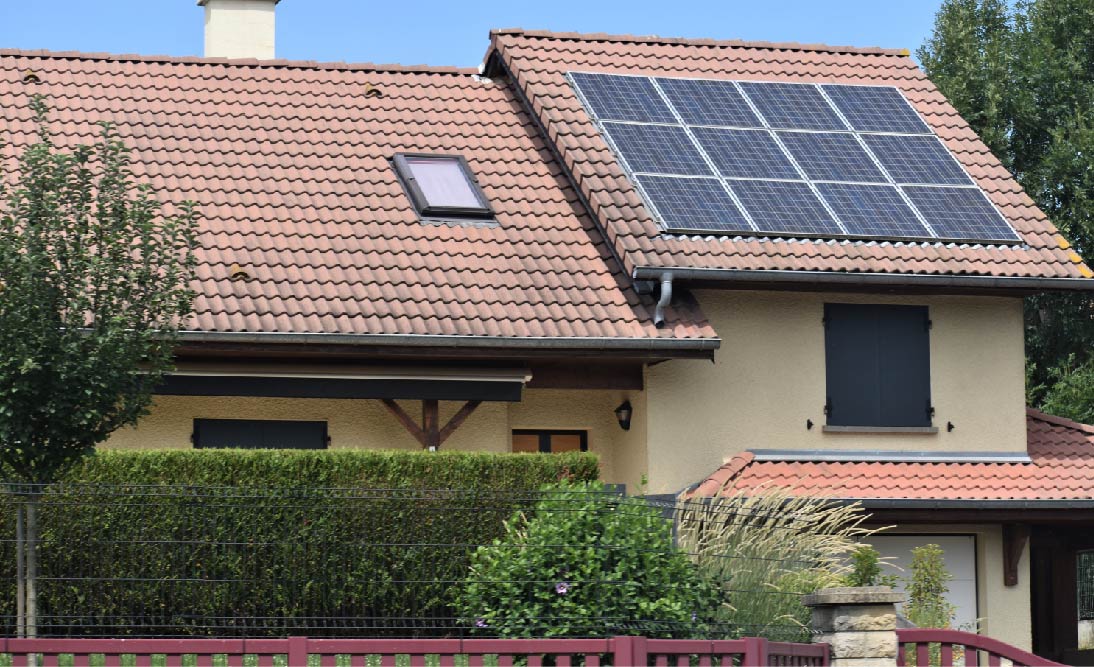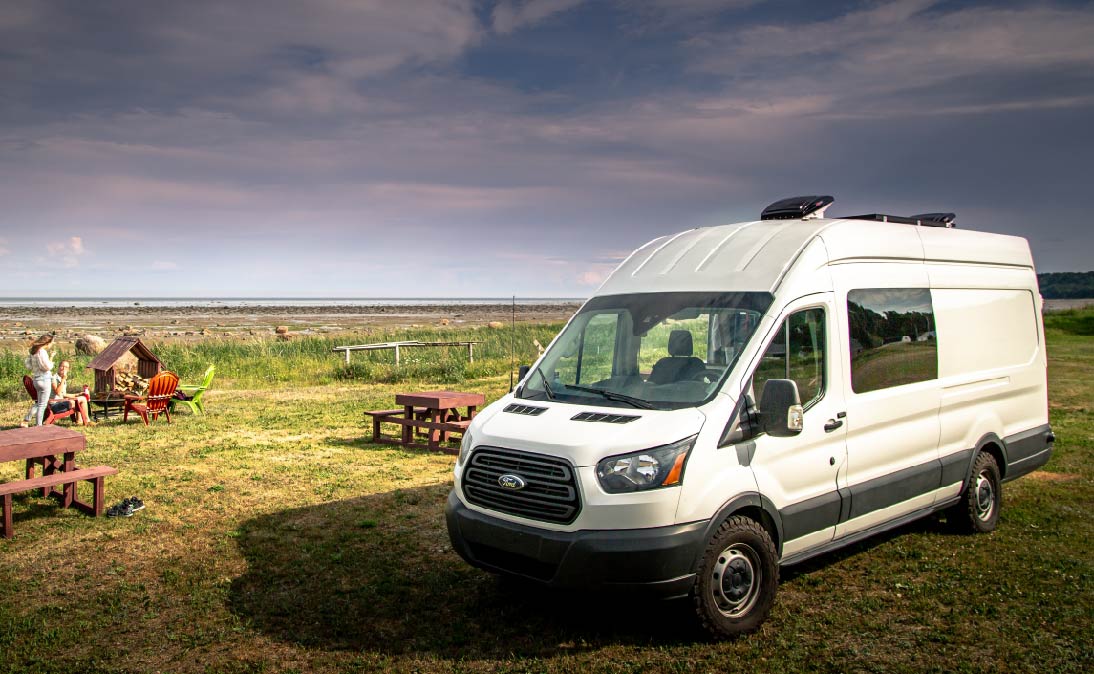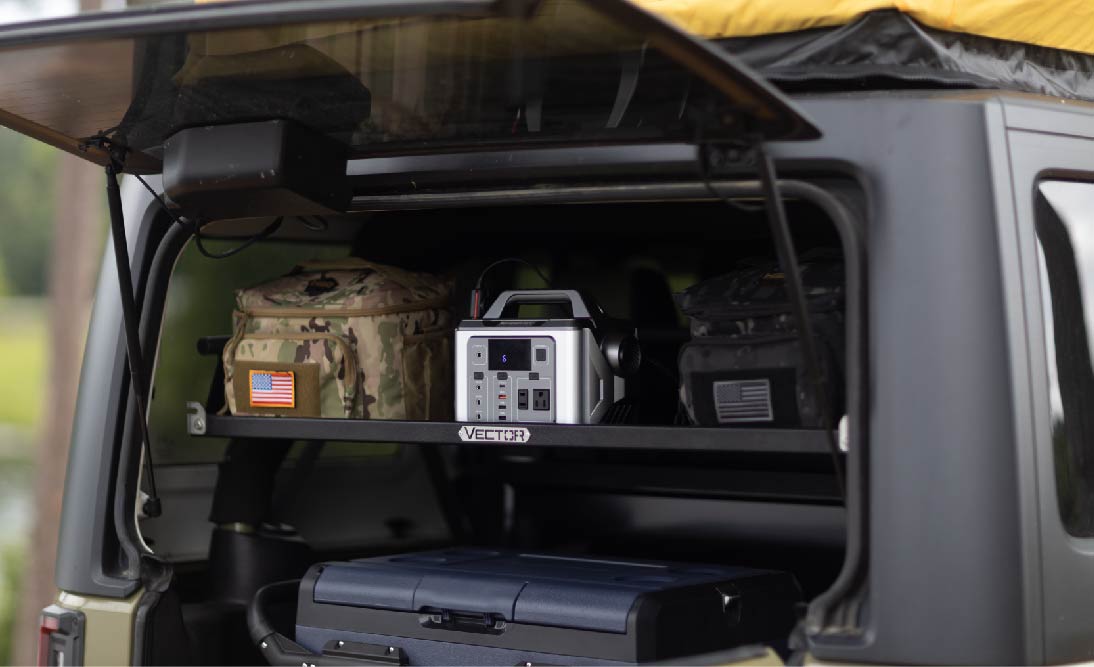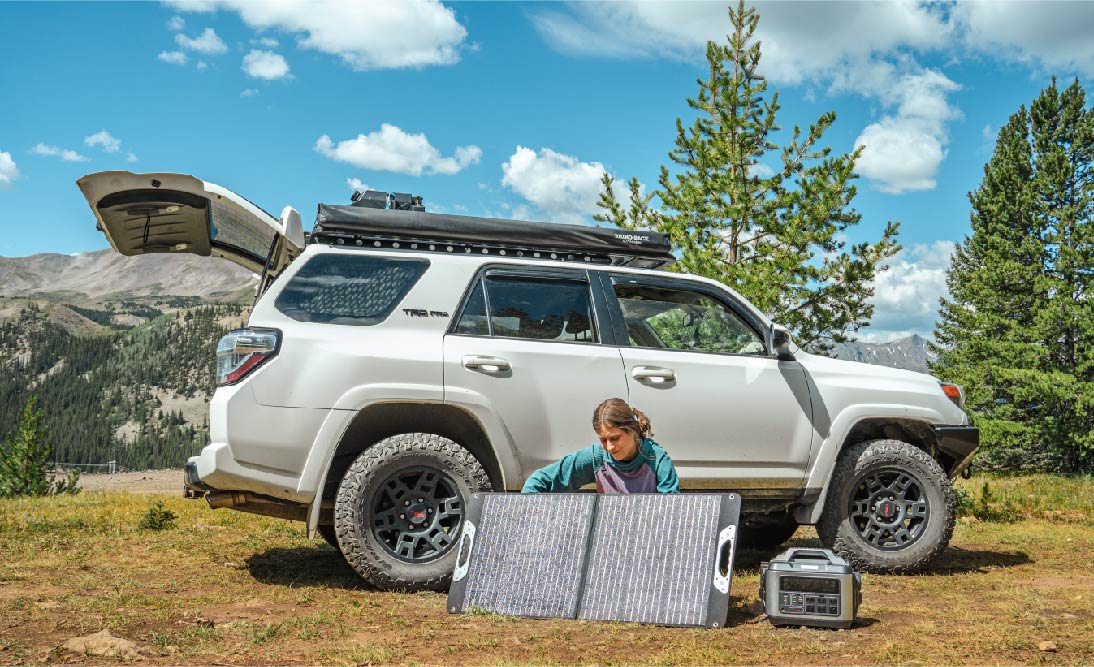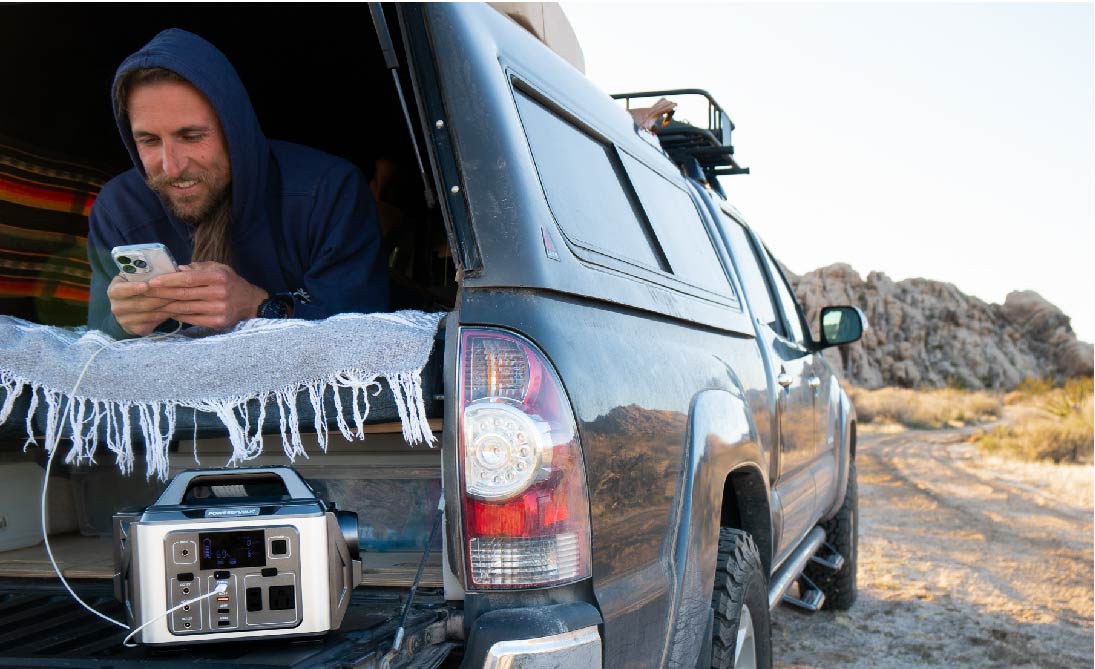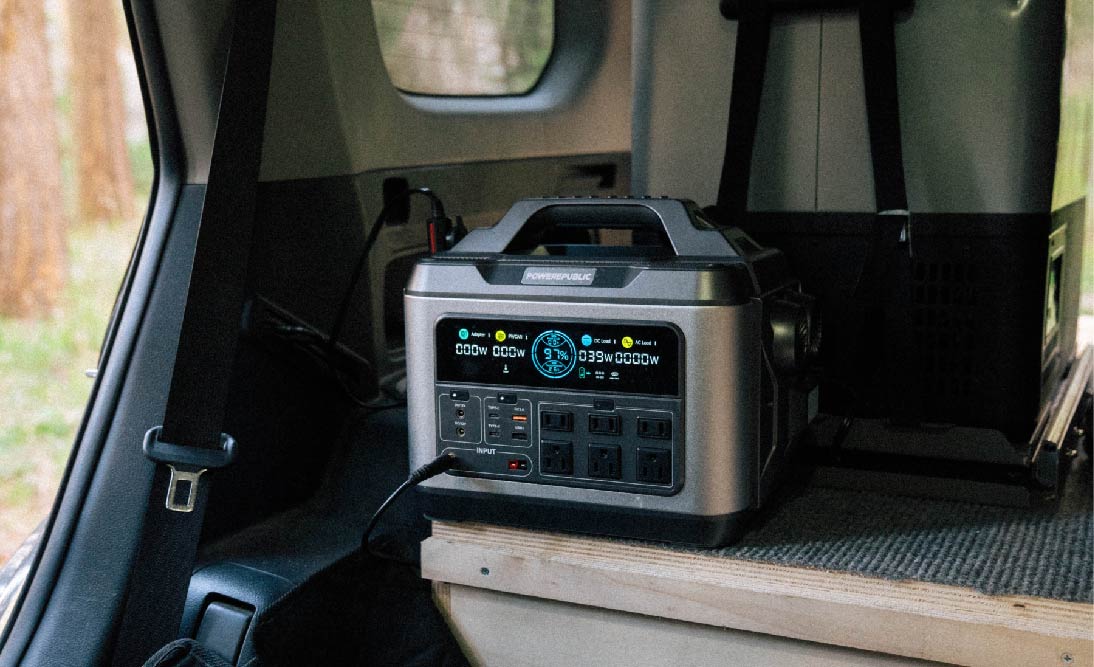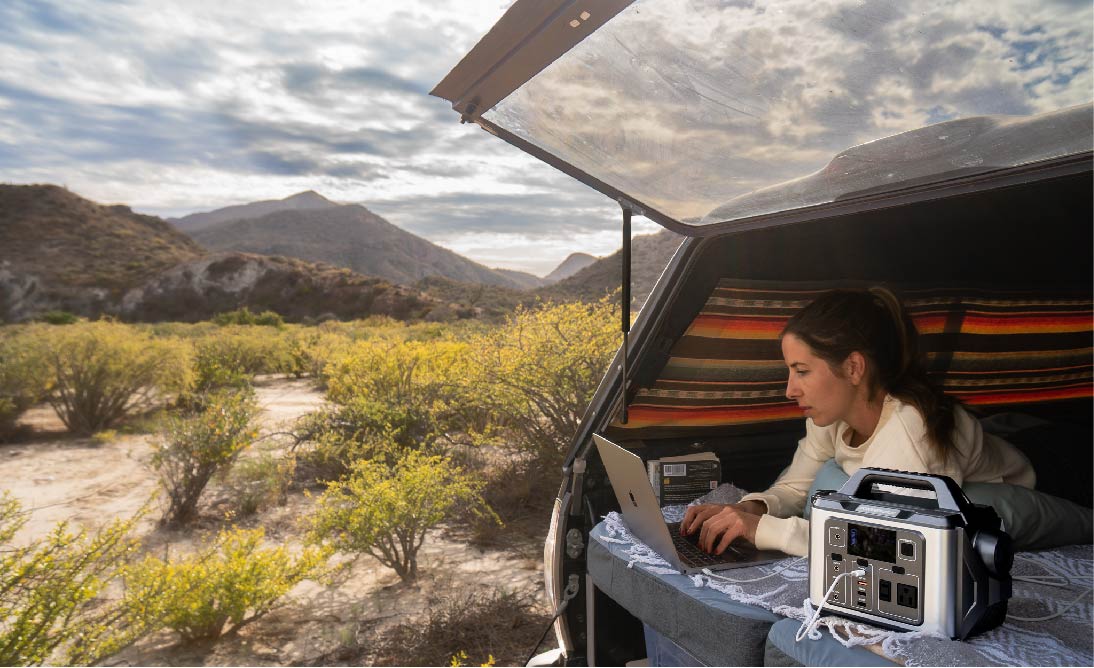Table of Contents:
As the world shifts towards renewable sources of energy, solar power has emerged as a leading contender in this green revolution. Understanding how to harness and utilize this abundant resource has become crucial for individuals and businesses alike. This guide focuses on a key aspect of leveraging solar energy: how to store solar energy effectively for various applications. From short-term daily needs to long-term storage solutions, this guide will walk you through the essentials of storing solar energy for different scenarios, including off-grid living, camping adventures, residential use, and commercial settings.
Storing solar energy efficiently can transform how we use power, making renewable energy more accessible and practical for everyday use. Whether you're a homeowner looking to reduce your carbon footprint or a business aiming to implement sustainable practices, knowing how to store solar energy is fundamental. This guide will provide you with the knowledge and tools needed to navigate the world of solar energy storage, ensuring you can make the most out of the sun's endless power. Join us as we explore innovative storage solutions that cater to a variety of needs, paving the way for a sustainable and energy-efficient future.
Solar Energy Overview
Solar energy, derived from the sun's rays, is a powerful and sustainable resource that has been harnessed by humanity to generate electricity, heat, and even lighting. This renewable energy source is pivotal in the global shift towards cleaner, more sustainable energy solutions. As we delve deeper into the intricacies of solar power, understanding how to store solar energy becomes increasingly important, not just for maximizing its benefits but also for overcoming some of its limitations.
What is Solar Energy?
Solar energy is captured through photovoltaic (PV) panels or solar thermal systems, converting sunlight directly into electricity or using the heat from the sun for heating purposes. This process of conversion is clean, does not produce greenhouse gases, and significantly reduces our reliance on fossil fuels.

Benefits of Solar Energy
-
Renewable: Solar energy is plentiful and will be available as long as the sun continues to shine.
-
Environmentally Friendly: Generating electricity from solar energy reduces carbon emissions and pollution.
-
Reduces Electricity Bills: Solar panels can significantly lower utility bills, as they allow users to generate their electricity.
-
Low Maintenance Costs: Solar panels require minimal maintenance, making them a cost-effective solution over time.
Limitations of Solar Energy
-
Intermittency: One of the primary challenges with solar energy is its availability. It is not constant; the sun doesn't shine at night, and its intensity can vary during the day and with weather conditions.
-
Initial Investment: The upfront cost of solar panels and installation can be high, though this is often offset by long-term savings and various incentive programs.
-
Space Requirements: Efficient solar energy systems often require a significant amount of space for installation, which can be a limitation in urban areas.
How to Store Solar Energy
Understanding how to store solar energy effectively addresses its intermittency issue, allowing for the use of solar power even when the sun isn't shining.
Here are three key methods:
-
Batteries: Solar batteries store excess energy produced during the day for use at night or during low-light conditions. This method is crucial for both residential and commercial settings, ensuring a constant energy supply.
-
Thermal Storage: This involves storing the heat from the sun in a thermal mass, which can be used to heat homes or water. This method is particularly beneficial for areas that require heating over long periods.
-
Grid Storage: Excess energy can also be fed back into the power grid, in some cases earning credits through net metering. This not only helps in storing solar energy for personal use but also contributes to the community's energy needs.
Applications and Examples
-
Residential Use: Homeowners can install solar panels on rooftops to generate electricity, using batteries to store excess energy. This setup can significantly reduce electricity bills and provide power during outages.
-
Commercial Settings: Businesses can utilize larger solar installations to power operations, employing extensive battery systems or grid storage solutions to manage energy use efficiently.
-
Off-Grid Living: For areas without access to the power grid, solar energy systems combined with effective storage solutions offer a lifeline, providing reliable energy for daily needs.
-
Camping: Portable solar panels and batteries enable campers to power devices and lights, making solar energy a versatile option for outdoor adventures.
Calculations
To illustrate, let's consider a simple calculation for a residential solar panel system with storage:
-
A home uses an average of 900 kWh per month.
-
A standard solar panel installation might produce around 30 kWh on a sunny day.
-
Assuming 5 hours of peak sunlight per day, you would need approximately 6 kW of solar panels to meet this demand.
-
To store solar energy for nighttime use or cloudy days, a battery system capable of storing at least a few days' worths of energy (e.g., 90 kWh for 3 days of autonomy) would be necessary.
These calculations highlight the importance of understanding both the potential and the limitations of solar energy. Knowing how to store solar energy efficiently allows for more consistent and reliable use, making solar power a cornerstone of sustainable energy strategies moving forward.
How To Store Solar Energy for Short-Term Use?
In the quest to harness the full potential of solar energy, learning how to store solar energy for short-term use is a critical component. Short-term storage solutions are essential for bridging the gap between daily energy production and consumption, ensuring that the power generated during the day is available when needed most, such as during evening hours or on overcast days. This section delves into effective strategies and technologies for short-term solar energy storage, complete with examples and calculations to guide homeowners and businesses alike.

Understanding Short-Term Storage
Short-term storage refers to the capacity to store energy for periods ranging from a few hours up to a day. This type of storage is vital for managing the daily fluctuations in solar power generation and consumption. By efficiently storing solar energy short-term, users can mitigate the impact of solar intermittency, especially during peak usage times in the early mornings and evenings when the sun is not shining.
Technologies for Short-Term Solar Energy Storage
Batteries: The most common method for short-term storage is battery technology. Lithium-ion batteries, in particular, have become popular due to their high energy density, long life span, and decreasing cost. These batteries can store excess solar energy produced during the day for use during the night or cloudy periods.
Supercapacitors: While not as widely used as batteries, supercapacitors offer a promising solution for very short-term energy storage needs. They excel in rapid charging and discharging cycles, making them ideal for applications requiring quick bursts of power.
Examples and Calculations
Example 1: Residential Use
-
A household generates an average of 20 kWh of solar energy on a sunny day but only consumes 15 kWh during daylight hours.
-
The excess 5 kWh can be stored in a battery system for use during the evening.
-
If the household's evening consumption is also 5 kWh, a battery with at least a 5 kWh capacity is required to bridge the gap until the next day.
Example 2: Commercial Setting
-
A small business with a larger solar array generates 100 kWh on a typical day but uses 80 kWh during business hours.
-
The surplus 20 kWh of energy can be stored for use during early morning preparations or after-sunset operations.
-
A battery system with a capacity of 20 kWh would ensure that the business can operate smoothly without relying on the grid during these times.
Calculations for Short-Term Storage Needs
To calculate your short-term storage needs, follow these steps:
-
Determine Daily Solar Energy Production: Calculate or note the average daily kWh your solar system produces.
-
Assess Daily Consumption Patterns: Identify how much energy you use during the day and how much you need to store for nighttime use.
-
Calculate Storage Capacity Required: Subtract the daytime energy use from total daily production to find out how much energy needs to be stored for short-term use.
For example, if your solar system produces 30 kWh per day and you use 25 kWh during daylight, you need to store 5 kWh for nighttime use.
Understanding how to store solar energy efficiently for short-term use not only maximizes the utility of solar installations but also significantly enhances energy independence and sustainability. By implementing appropriate storage solutions, households and businesses can ensure a steady and reliable power supply, optimizing the use of solar energy to meet their daily energy needs.
How To Store Solar Energy for Long-Term Use?
Storing solar energy for long-term use is a vital strategy for maximizing the benefits of solar power, particularly in regions with seasonal variances in sunlight or for applications requiring a consistent energy supply throughout the year. Understanding how to store solar energy over extended periods allows users to maintain energy independence and resilience, even when solar production is low. This section explores effective solutions and methodologies for long-term solar energy storage, offering examples and calculations to illustrate the concept in practical terms.

The Importance of Long-Term Storage
Long-term storage solutions are designed to retain excess solar energy for weeks, months, or even seasons. This capability is especially crucial for areas experiencing long winters with minimal sunlight or for off-grid systems that need to ensure a stable power supply throughout the year. By mastering how to store solar energy for long-term use, individuals and communities can significantly reduce reliance on non-renewable energy sources, thus contributing to environmental sustainability and energy security.
Solutions for Long-Term Solar Energy Storage
-
Mechanical Storage Systems: One of the most promising technologies for long-term storage is pumped hydro storage, where excess solar energy is used to pump water to a higher elevation. The stored potential energy is then converted back to electricity on demand by releasing the water through turbines.
-
Chemical Storage: Hydrogen production through electrolysis is another method for long-term solar energy storage. Excess solar power is used to split water into hydrogen and oxygen. The hydrogen can be stored indefinitely and then used as fuel or converted back into electricity when needed.
-
Thermal Storage Systems: Large-scale thermal storage methods, such as molten salt storage, capture and store heat from solar energy. This stored heat can be used to generate steam and produce electricity, even during periods of low solar irradiance.
Examples and Calculations
Example 1: Residential Community
-
A community in a northern latitude with significant seasonal differences installs a solar array capable of producing an excess of 50 MWh during the summer months.
-
Through electrolysis, this excess energy is converted into hydrogen, which is stored in large tanks.
-
Assuming the community requires 5 MWh per month during winter when solar production is minimal, the stored hydrogen must supply power for up to 6 months, totaling 30 MWh.
-
The calculation for the required hydrogen storage capacity would consider the efficiency of the electrolysis and fuel cell process, typically around 50%, necessitating the initial storage of 60 MWh of solar energy to meet winter demands.
Example 2: Off-Grid Cabin
-
An off-grid cabin uses a solar panel system generating an excess of 10 kWh per day during the sunny season, totaling approximately 900 kWh over 3 months.
-
To store this energy for long-term use, the cabin employs a combination of battery storage for short-term needs and mechanical storage for long-term needs.
-
With a pumped hydro storage solution, the excess energy is used to pump water into a storage tank on a hill. The potential energy stored in the elevated water is then converted back to electricity during the winter months, with an efficiency rate of approximately 80%.
-
This requires calculating the volume of water and the height of the elevation necessary to store the equivalent of 900 kWh, considering the efficiency loss.
Understanding how to store solar energy for long-term use involves complex calculations and deep comprehension of the available technologies and their respective efficiencies. These long-term storage solutions not only provide a way to overcome the seasonal variability of solar production but also pave the way for a future where renewable energy can fully meet our energy needs. By implementing these strategies, we can significantly enhance the reliability and sustainability of solar power as a primary energy source.
How To Store Solar Energy for Off-Grid Living(Vanlife, RVlife, and Beyond)?
Storing solar energy for off-grid living, such as in van life or RV life, is an essential aspect of achieving energy independence and sustainability while on the move. Off-grid lifestyles rely on self-sufficient energy sources, with solar power often being the primary choice due to its reliability and renewable nature. This section delves into how to store solar energy effectively for off-grid living, providing practical solutions, examples, and calculations to ensure a consistent and reliable energy supply.

The Importance of Solar Energy Storage for Off-Grid Living
For those living off-grid in vans, RVs, or remote cabins, the ability to store solar energy efficiently is crucial. It ensures access to electricity for lighting, cooking, heating, and powering devices even when the sun isn’t shining. Proper storage solutions allow for a comfortable and sustainable lifestyle, free from the constraints and costs of traditional energy grids.
Solutions for Storing Solar Energy in Off-Grid Settings
-
Battery Banks: The cornerstone of solar energy storage for off-grid living is a robust battery bank. Lithium-ion batteries are favored for their high energy density, efficiency, and longevity. They can store solar energy generated during the day for use at night or during periods of low sunlight. For example, POWEREPUBLIC Portable Power Stations.
-
Charge Controllers: An essential component of the solar storage system, the charge controller regulates the flow of electricity from the solar panels to the battery bank and prevents overcharging, thereby extending the life of the batteries.
-
Power Inverters: To use stored solar energy with standard appliances and electronics, a power inverter is required to convert the DC electricity stored in batteries to AC electricity.
Examples and Calculations
Example 1: Van Life Setup
-
A van equipped with a 300-watt solar panel system generates an average of 1.5 kWh of electricity on a sunny day (assuming 5 hours of peak sunlight).
-
Considering the need to power lights, a refrigerator, charging devices, and occasional use of small appliances, the daily energy consumption might average around 1 kWh.
-
How to store solar energy: A battery bank with a capacity of at least 2-3 kWh, such as POWEREPUBLIC T2200 and T3000 models, is recommended to ensure a buffer for days with less sunlight. This setup allows for storing enough solar energy to meet the van's daily energy needs and provides a reserve for cloudy days.
Example 2: RV Life Scenario
-
An RV with a larger roof space might accommodate a 600-watt solar panel system, potentially generating 3 kWh of electricity on a sunny day.
-
The energy requirements for an RV, including air conditioning, heating, cooking, and entertainment, could average around 2 kWh per day.
-
How to store solar energy: A larger battery bank with a capacity of 4-6 kWh would be suitable for an RV, allowing for the storage of surplus solar energy for use during inclement weather or higher consumption periods.
Calculations for Off-Grid Solar Energy Storage
To determine the size of the battery bank needed for off-grid living:
-
Calculate Daily Energy Production: Multiply the total wattage of your solar panels by the average number of peak sunlight hours you expect to receive.
-
Estimate Daily Energy Consumption: Add up the energy usage of all appliances and devices you plan to power.
-
Determine Storage Capacity Needed: Ensure your battery bank can store at least 1-2 days' worth of your daily energy consumption, considering the efficiency loss during energy conversion and storage.
For instance, if your setup produces 2 kWh per day and you use 1.5 kWh, you'll want a battery system that can store at least 3 kWh to cover your energy needs for a day and have a reserve for another day without sunlight.
Understanding how to store solar energy efficiently is fundamental for off-grid living, ensuring that van lifers, RV enthusiasts, and those in remote locations can enjoy a sustainable and independent lifestyle. By selecting the right combination of solar panels, battery banks, charge controllers, and power inverters, off-grid dwellers can harness and store solar energy to meet their daily needs, embracing the freedom and sustainability of solar-powered living.
How To Store Solar Energy for Camping?
Storing solar energy for camping has become a game-changer for outdoor enthusiasts, offering a blend of convenience and sustainability for adventures in the great outdoors. Whether you're backpacking, setting up camp in a remote location, or enjoying a weekend in a national park, understanding how to store solar energy effectively is key to powering devices, lights, and essential equipment. This section provides a comprehensive guide on storing solar energy for camping, incorporating practical solutions, examples, and calculations to ensure you remain powered up while immersed in nature.

The Importance of Solar Energy Storage for Camping
Camping often takes you away from conventional power sources, making solar energy an ideal solution for maintaining power supply. Knowing how to store solar energy efficiently ensures that campers have access to electricity for charging phones, GPS devices, cameras, portable lights, and even small appliances, regardless of their proximity to the grid. This capability significantly enhances the camping experience, offering both comfort and safety.
Solutions for Storing Solar Energy While Camping
-
Portable Solar Panels: Compact and lightweight solar panels are perfect for capturing solar energy during the day. These can be easily attached to backpacks or set up at camp to gather sunlight. For example, POWEREPUBLIC Portable Solar Panels.
-
Portable Power Banks: Power banks charged by solar panels during the day serve as an excellent storage solution. They come in various capacities, tailored to meet different energy needs. For example, POWEREPUBLIC portable power stations.
-
Solar Generator Kits: For more extensive power requirements, solar generator kits, which include larger panels and a high-capacity battery storage unit, can provide a more robust solution. For example, POWEREPUBLIC solar generator kits.
Examples and Calculations
Example 1: Backpacking Trip
-
A hiker uses a portable solar charger (20W) to capture solar energy during the day. Assuming an average of 5 hours of good sunlight, this setup can generate approximately 100Wh (0.1kWh) of electricity daily.
-
How to store solar energy: This energy is stored in a portable power bank with a capacity of 250Wh. The stored solar energy can charge a smartphone (approx. 10Wh for a full charge) up to 10 times or a small LED camp light (5Wh) for 20 hours.
Example 2: Family Camping
-
For a family camping trip, a solar generator kit with a 100W solar panel is utilized. On a sunny day, with an average of 5 hours of peak sunlight, it generates around 500Wh (0.5kWh) of electricity.
-
How to store solar energy: The solar generator's built-in battery stores this energy, which can then be used to power small appliances, charge multiple devices, and provide lighting around the campsite. For example, a portable fridge that requires 40Wh per hour can be powered for about 12 hours, ensuring food and drinks stay cool.
Calculations for Camping Solar Energy Storage Needs
To determine your solar energy storage needs for camping:
-
Identify Daily Power Usage: List all electronic devices and their power requirements (in Wh) you plan to use while camping.
-
Calculate Total Daily Energy Production: Multiply the wattage of your solar panel by the number of expected peak sunlight hours.
-
Determine Storage Capacity Required: The capacity of your power bank or solar generator battery should at least match or exceed the total daily energy production, ensuring you can store all the solar energy generated throughout the day.
For instance, if your solar setup produces 200Wh per day and your daily device charging needs a total of 150Wh, you'll need a storage solution with at least 200Wh capacity to cover your needs and account for any inefficiency losses.
Knowing how to store solar energy for camping is essential for anyone looking to extend their outdoor adventures without sacrificing the conveniences of modern technology. By employing portable solar panels, power banks, or solar generator kits, campers can ensure their devices remain charged, and their nights stay bright. These solar storage solutions not only provide a reliable power source but also promote sustainability by reducing reliance on disposable batteries and minimizing environmental impact. With the right setup, campers can enjoy the wilderness while staying connected and powered up, embodying the perfect blend of nature and technology.
Final Thoughts
In conclusion, mastering how to store solar energy is pivotal for harnessing the full potential of this abundant and renewable resource. Whether for short-term daily use, long-term seasonal storage, off-grid living, or camping adventures, effective solar energy storage solutions are key to ensuring a reliable and consistent power supply. Through a variety of technologies, including batteries, charge controllers, and portable power banks, individuals can capture and store solar power to meet their unique energy needs.
This guide has explored the importance of understanding how to store solar energy across different scenarios, offering practical solutions and examples to help you make the most of solar power. By implementing these strategies, we can significantly enhance our energy independence, reduce our carbon footprint, and pave the way for a more sustainable and energy-efficient future. The ability to store solar energy efficiently not only maximizes the benefits of solar installations but also promotes a greener, more resilient energy landscape for everyone.
Explore more about POWEREPUBLIC Portable Power Stations and Solar Generator Kits.









